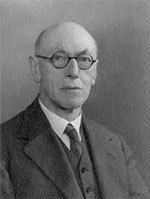Name Edward Cockayne | ||
 | ||
Died 1956, Tring, United Kingdom | ||
Edward Alfred Cockayne (1880 Sheffield – 1956) was an English physician specializing in pediatrics. He spent most of his medical career at Great Ormond Street Hospital for Sick Children in London.

Cockayne was particularly interested in endocrinology, and rare, genetic diseases of children. In 1946 he recognized a disease that would be named after him, called Cockayne's syndrome. This is a rare multisystem disorder characterized by dwarfism, pigmentary retinopathy, impaired nervous system development, and facial abnormalities. This disease has since been divided into three subtypes:
In 1933 he published the "Inherited Abnormalities of the Skin and its Appendages". This was the first book that dealt exclusively with genodermatoses (inherited skin disorders).
Besides his medical work, Cockayne was an entomologist. He amassed a large collection of butterflies and moths, which in 1947 was donated to the Walter Rothschild Zoological Museum at Tring, Hertfordshire. In 1943 he became president of the Royal Entomological Society of London.
